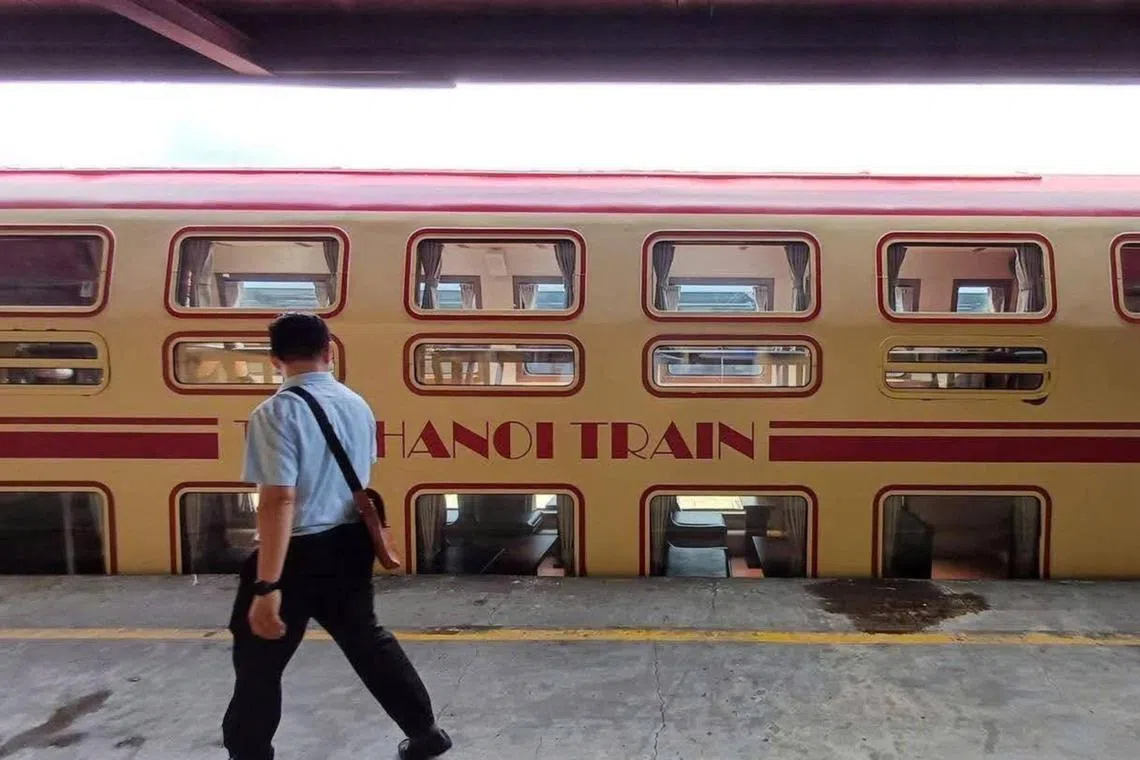The Hanoi Train begins official operation, bringing tourists a novel travel experience
Sign up now: Get ST's newsletters delivered to your inbox

The train consists of five luxuriously designed double-decker seating carriages and two carriages reserved for check-in.
PHOTO: KLOOK/FACEBOOK
Follow topic:
HANOI – The Hanoi Train officially began operation on Sept 6, offering visitors a new way to explore the Vietnamese capital’s landmarks and travel east to Tu Son in Bac Ninh province.
As the latest product of the tourism sector in collaboration with the Vietnam Railway Corporation (VNR), the train was first introduced with trial runs on Aug 19.
It is expected to popularise local culture and history, as well as lure more people to visit the capital city with a unique way of travelling.
It demonstrates the efforts of related units to innovate and improve service quality and their dedication in bringing the railway back to urban life in a close and lively way, contributing to promoting and developing tourism and spreading traditional cultural values.
Two trains will depart daily from Hanoi Station via Gia Lam, Yen Vien for Tu Son Station before returning to Hanoi. Tourists can check in 30 minutes prior to the departure times at 8am and 1.30pm.
In the opposite direction, trains will depart from Tu Son at 10.30am and 4.20pm.
The train, operated by BHL Tourism Service Trading Joint Stock Company, draws inspiration from the ancient Thang Long Citadel. Its carriages are named after five historic gates – Cau Den, Quan Chuong, Cau Giay, Cho Dua and Dong Mac – each evoking the thousand-year legacy of the capital and the cultural heritage of the Red River Delta.
There are five luxuriously designed double-decker seating carriages and two carriages reserved for check-in. The carriages’ interiors have different themes and from 40 to 60 seats each.
Through their 40-minute trip, passengers will enjoy national traditional music and dance performances such as quan ho (love duet folk singing) ca tru (ceremonial singing), cheo (traditional opera) and xam (blind buskers’ singing).
In addition, there will be traditional handicraft experiences such as making Dong Hoo paintings, a folk painting genre famous for its colours from natural materials; and Phu The cakes, a symbol for eternal love, family happiness.
Passengers will be served Hanoi’s cuisine such as young sticky rice, jasmine-scented lotus tea and seasonal snacks.
After arriving at Tu Son Station, travellers can visit Do Temple, one of the most important historical and cultural relics of Vietnam. It was a place of worship for eight kings of the Ly dynasty, associated with the golden age in the nation’s history. They will not only visit the relics, but also learn about the origins of the dynasty that left a profound mark on Dai Viet’s culture and politics.
There will be other local cultural activities travellers can take part in before returning to Hanoi.
The ticket sale system will be expanded at the official counters of VNR at the Hanoi Station, as well as through the network of domestic and foreign travel agents.
Ticket prices range from 550,000 to 750,000 dong (S$27 to S$36). Children and group bookings will have promotions and discounts. THE VIETNAM NEWS/ASIA NEWS NETWORK

